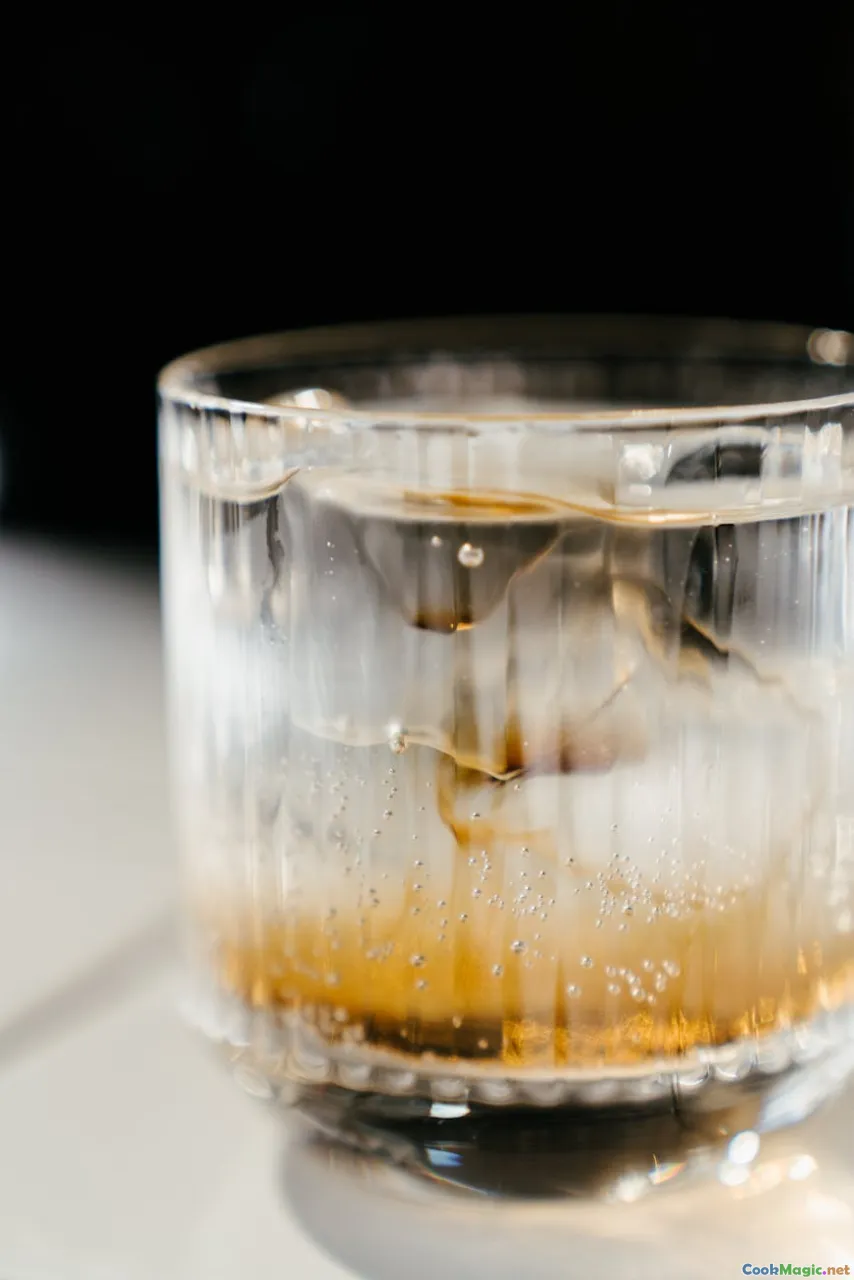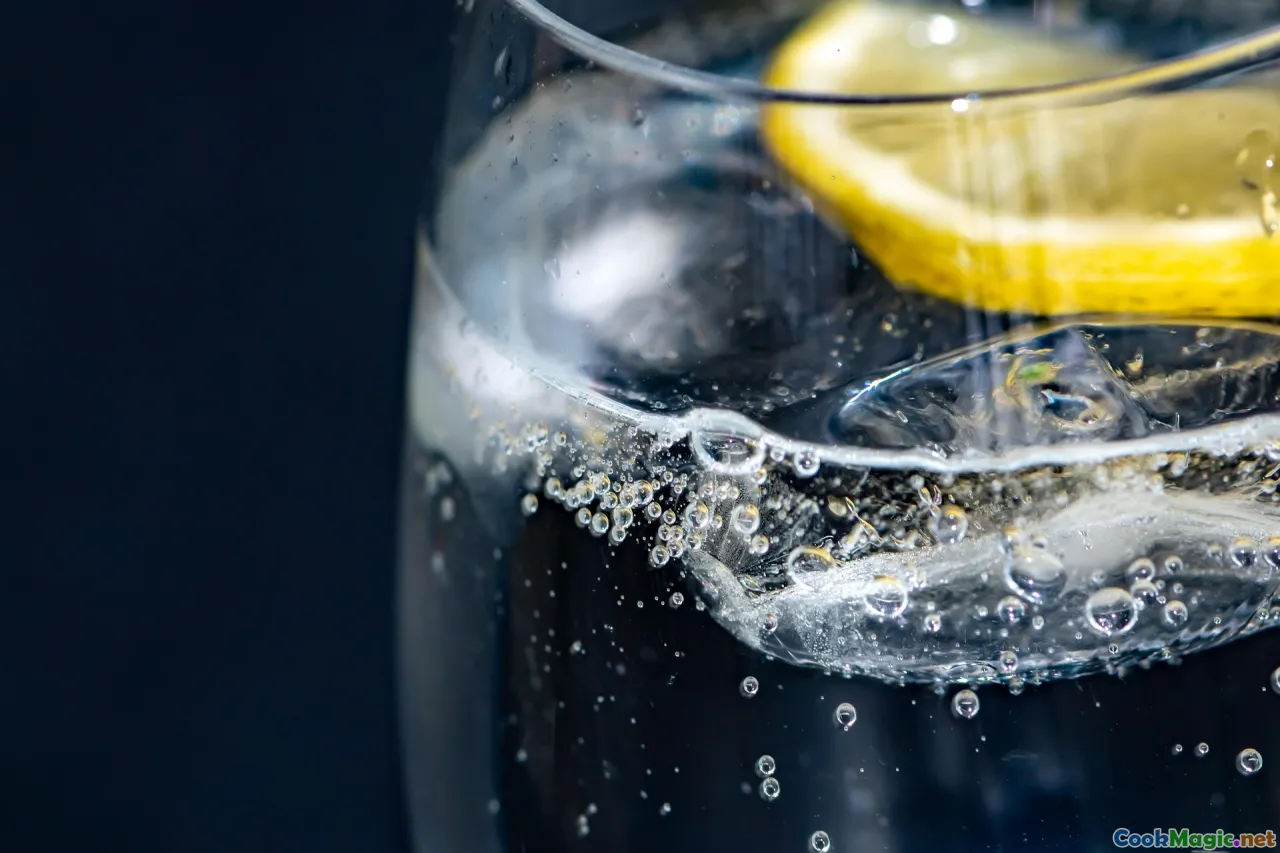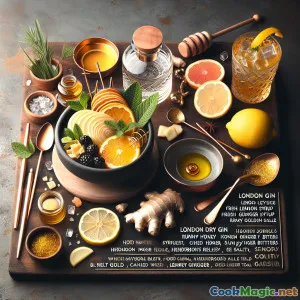
Morvan-Wald-Tonikum mit Tanne und Cassis
(Morvan Forest Tonic with Fir and Cassis)
(0 Bewertungen)0
43
November 01, 2025
Problem melden
Zutaten
-
45 ml London Dry Gin
(Use a French gin if available for regional character)
-
120 ml Tonic Wasser
(Chilled; choose a dry, premium tonic)
-
10 ml Sirup aus Fichtennadeln (oder Kiefernnadeln)
(Homemade or artisan; adds resinous sweetness)
-
10 ml Weißer Verjus
(Burgundy-style green grape juice; bright acidity)
-
7.5 ml Suze (Enzianlikör)
(Adds alpine bitterness and depth)
-
5 ml Crème de cassis
(Just a barspoon for hue and blackcurrant whisper)
-
1 strip Zitronenschale
(Freshly cut; express oils over drink)
-
1 sprig Rosmarin
(Leicht zerdrückt, um das Aroma freizusetzen)
-
3 Berries Wacholderbeeren
(Lightly crushed; perfume the glass)
-
6-8 cubes Eis
(Large, clear cubes preferred to reduce dilution)
(Use a French gin if available for regional character)
(Chilled; choose a dry, premium tonic)
(Homemade or artisan; adds resinous sweetness)
(Burgundy-style green grape juice; bright acidity)
(Adds alpine bitterness and depth)
(Just a barspoon for hue and blackcurrant whisper)
(Freshly cut; express oils over drink)
(Leicht zerdrückt, um das Aroma freizusetzen)
(Lightly crushed; perfume the glass)
(Large, clear cubes preferred to reduce dilution)
Nährwerte
- Portionen: 1
- Portionsgröße: 1 highball (250 ml)
- Calories: 220 kcal
- Carbohydrates: 0 g
- Protein: 0 g
- Fat: 0 g
- Fiber: 0 g
- Sugar: 24 g
- Sodium: 15 mg
- Cholesterol: 0 mg
- Calcium: 20 mg
- Iron: 0.1 mg
Anweisungen
-
1 - Chill glass and prep aromatics:
Place a highball in the freezer for a few minutes. Cut a wide lemon peel and lightly bruise the rosemary sprig. Lightly crush juniper berries, if using.
-
2 - Perfume the glass:
Rub the inside rim of the chilled glass with the lemon peel. Drop in the crushed juniper berries and the rosemary sprig to scent the vessel.
-
3 - Build the forest base:
Add gin, fir syrup, verjus, and Suze (if using) to the glass. Stir briefly to combine and integrate the sweet-bitter-acidic balance.
-
4 - Ice and lengthen with tonic:
Add large ice cubes to fill the glass. Gently top with chilled tonic water. Lift with a barspoon once to combine without knocking out bubbles.
-
5 - Finish with cassis and citrus oils:
Drizzle the cassis down the inside of the glass for a subtle gradient. Express the lemon peel over the drink and place it as a garnish alongside the rosemary.
Place a highball in the freezer for a few minutes. Cut a wide lemon peel and lightly bruise the rosemary sprig. Lightly crush juniper berries, if using.
Rub the inside rim of the chilled glass with the lemon peel. Drop in the crushed juniper berries and the rosemary sprig to scent the vessel.
Add gin, fir syrup, verjus, and Suze (if using) to the glass. Stir briefly to combine and integrate the sweet-bitter-acidic balance.
Add large ice cubes to fill the glass. Gently top with chilled tonic water. Lift with a barspoon once to combine without knocking out bubbles.
Drizzle the cassis down the inside of the glass for a subtle gradient. Express the lemon peel over the drink and place it as a garnish alongside the rosemary.
Mehr über: Morvan-Wald-Tonikum mit Tanne und Cassis
Morvan Forest Tonic
The Morvan Forest Tonic is a fragrant, woodland-inspired riff on the classic gin and tonic, paying homage to the Morvan—an ancient massif and protected natural park in Burgundy, France. This drink blends the alpine brightness of fir needle syrup with the mineral fizz of dry tonic water, the gentle tartness of Burgundy-style verjus, and the whispering bitterness of gentian liqueur. A final veil of crème de cassis nods to the region’s blackcurrant heritage, creating a shimmering gradient in the glass and a layered, forest-forward flavor.
Flavor Profile
- Aroma: Resinous pine, crushed rosemary, and lifted lemon oils.
- Palate: Bright and linear to start—juniper from the gin dovetails into fir syrup’s sap-like sweetness; verjus adds a cool, grape-skin acidity; a faint gentian hum lingers; blackcurrant blooms on the finish.
- Texture: Effervescent, crisp, and refreshing with just enough body from the syrup and liqueurs to feel substantial.
Ingredient Notes
- Gin: Choose a juniper-forward gin to echo the forest theme. A French gin with regional botanicals enhances the sense of place.
- Fir (or Pine) Needle Syrup: This is the soul of the drink. If you don’t have access to fir tips, a quality pine honey or a spruce tip syrup offers similar conifer notes.
- Verjus Blanc: Traditionally from unripe grapes, verjus contributes acidity without the overt citrus of lemon juice, giving a rounder, grape-driven brightness that couples beautifully with cassis.
- Suze (Gentian Liqueur): Optional but recommended. Its pale, rooty bitterness grounds the sprucey sweetness and lifts the tonic’s quinine.
- Crème de Cassis: Use sparingly—just a barspoon. It should add a blush and a finishing echo of Burgundy rather than turning the drink syrupy.
- Tonic Water: A dry, high-quality tonic keeps the sugar in check and lets the forest botanicals sing.
Technique and Balance
Build in a chilled highball to preserve carbonation. Perfuming the glass with crushed juniper and rosemary layers aroma from the ground up, while a gentle lift with a barspoon integrates ingredients without defeating the bubbles. The proportions strike a triangle of sweet (fir syrup), bitter (gentian and quinine), and acid (verjus), with gin’s botanical spine holding the structure.
Substitutions & Variations
- No Fir Syrup: Substitute spruce tip syrup or a light pine honey cut 1:1 with water.
- No Verjus: Use 5 ml fresh lemon juice plus 5 ml white grape juice to mimic its soft, green acidity.
- Bitter Swap: Replace Suze with Salers, Aveze, or a few drops of gentian tincture.
- Berry Twist: A thin slice of fresh blackcurrant or a few dried bilberries can garnish when cassis isn’t available.
- Evergreen Smash: Muddle a small rosemary tip and a juniper berry before building for amplified aroma.
- Zero-Proof: Swap gin for a nonalcoholic juniper distillate, omit Suze, and add 2 extra ml fir syrup plus a dash of nonalcoholic bitters.
History & Cultural Significance
The Morvan’s rolling, forested hills have long provided resinous aromatics—fir, pine, and spruce—alongside the agricultural riches of nearby Burgundy. Verjus, historically used to balance sauces and drinks before citrus became commonplace, fits naturally here. Crème de cassis, a Burgundy emblem, ties the drink to regional tradition without overwhelming it. The tonic-and-gin template, born from colonial health tonics, evolves in this recipe to celebrate French terroir rather than mask quinine’s bitterness.
Serving Suggestions
Serve in a tall, chilled highball with large clear ice for slower dilution. Keep tonic ultra-cold for tighter bubbles and a longer-lasting head. Pair with alpine cheeses, charcuterie, or a simple plate of radishes with sea salt and butter—classic French aperitif fare that won’t trample the drink’s woodland nuance.
Troubleshooting & Pro Tips
- Too Sweet? Reduce fir syrup to 5 ml or choose a drier tonic.
- Too Bitter? Omit Suze and ensure your tonic isn’t overly quinine-forward.
- Flat Texture? Over-stirring kills carbonation. Lift once or twice—no more.
- Resin Overload? Swap rosemary for thyme, and peel a smaller lemon strip.
- Color Bleed: Drizzle cassis down the glass at the end for a subtle gradient rather than mixing it in.
Sustainability & Foraging Notes
If making your own fir syrup, forage responsibly: harvest only young tips, take sparsely from multiple trees, and follow local laws. Wash and blanch lightly to tame resin before simmering in simple syrup. Respecting the forest’s rhythms honors the Morvan spirit at the heart of this tonic.
In sum, the Morvan Forest Tonic is a crisp, elegant apéritif that bottles the scent of a Burgundian woodland after rain—botanical, balanced, and quietly transportive.




















